Learn how to relocate licks to different keys in Jim Campilongo''s latest lesson.
Chops: Intermediate
Theory: Beginner
Lesson Overview:
• Discover the power of sonic “relocation.”
• Emulate the sound of steel guitar using suspensions.
• Create easily transposable licks based out of basic barre chord shapes.
Click here to download a printable PDF of this lesson's notation.
If I remember correctly, my friend Chuck Prophet, from my San Francisco days, had a term for a few choice licks—he called them “relocation licks.” Relocation is not a term used at Juilliard or Berklee, so bear with me while I try to explain.
A relocation lick is a phrase so genre-specific that one can move (relocate) to the area the lick represents! In the case of this lesson, pack your bags and get a one-way ticket to Nashville or Texas.
We will start with a phrase everyone knows (Fig. 1) to give the subsequent phrases you'll learn some context. This is a cliché using sixths—think of the intro to Sam and Dave’s “Soul Man.” Please note that the beginning two notes, B and G, are found within the confines of a G barre chord. Make this your musical and visual reference for easy transposition.
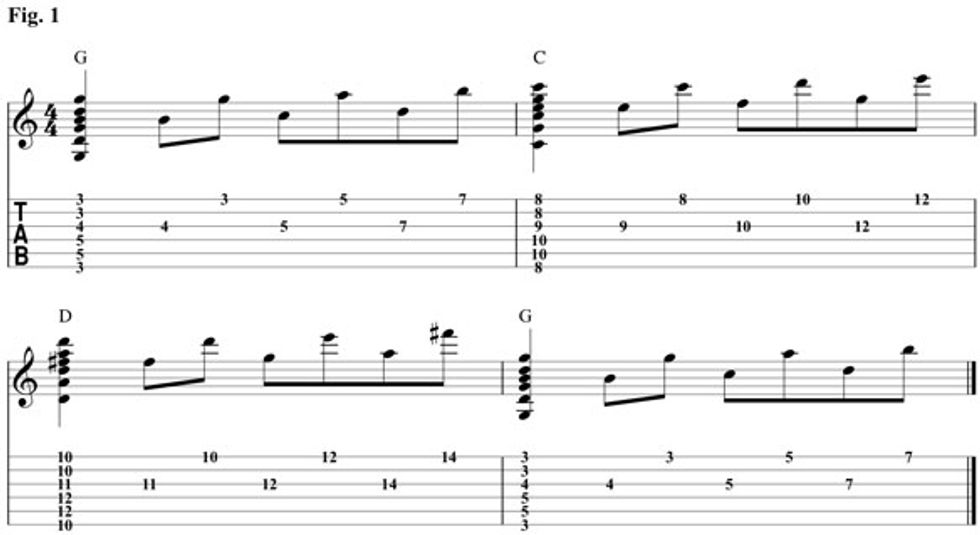
Okay, here goes—although you probably know this lick already. Again, use the G barre chord as a reference and use a pick for the 3rd string and middle finger for the 1st string. If this is uncomfortable or incompatible with your own technical approach, strum downward on the top three strings while muting the unwanted 2nd string. Personally, I find the hybrid-picking approach much easier, and it allows for some pinging and popping when the middle finger aggressively snaps the 1st string.
It's beneficial to transpose this phrase, so we will play it in G, C, and D. I suggest you play the corresponding barre chord before playing the lick. This way you can internalize the transposition reference. In a few seconds you won’t need to play the barre chord, but you'll be able to transpose this lick—and the upcoming ones—quickly and effortlessly.
Now we’ll push the envelope with the lick in Fig. 2, which hopefully will be new to you. Because we start this phrase on the second scale step of G (A on the 2nd fret), we leave the comfy surroundings of the 3rd-position barre chord. Try to visually superimpose the chord as a reference point. Again, I suggest employing a hybrid approach that allows for some popping when you snap the 1st string.
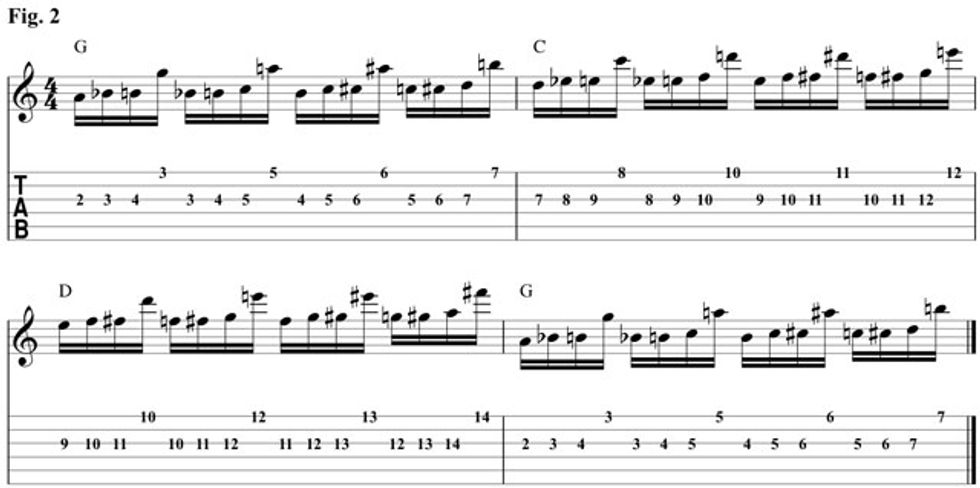
Next, let’s play the previous phrase descending (Fig. 3). Again, try to visualize the corresponding barre chord, and try to employ a committed snap on the 1st string. You can get a chicken pickin’ sound by pulling the string so it strikes the fretboard. Don't be apprehensive about using some middle-finger muscle.
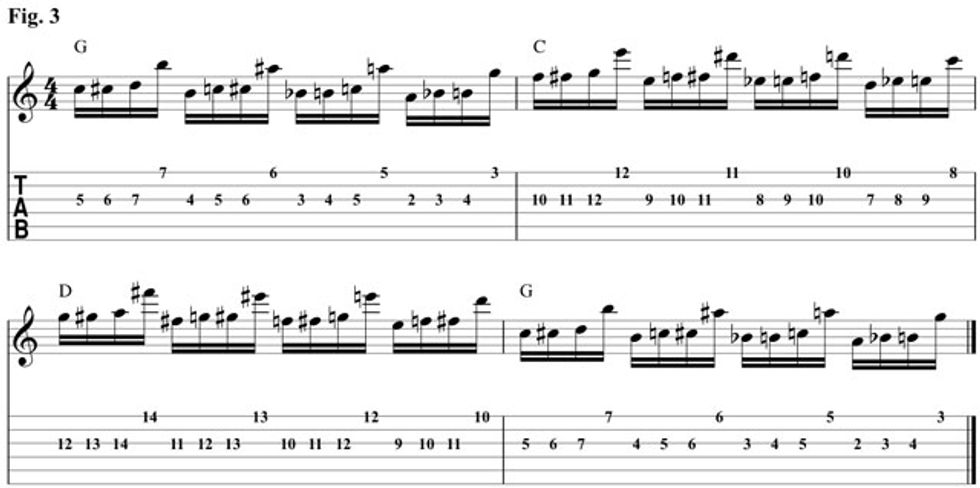
Again, the next phrase in Fig. 4 is based on the first lick of this lesson—but this incorporates a suspension that creates a steel-guitar flavor. Make sure that when bending strings you use all available fingers in their respective position to assist the bend and keep it in tune. This phrase requires some 2nd-finger bending muscle, so make sure you have your 1st finger help. I've added a rhythm so you can hear the phrases in context. As before, I suggest you employ the pick and index of your picking hand to play strings 3 and 1.
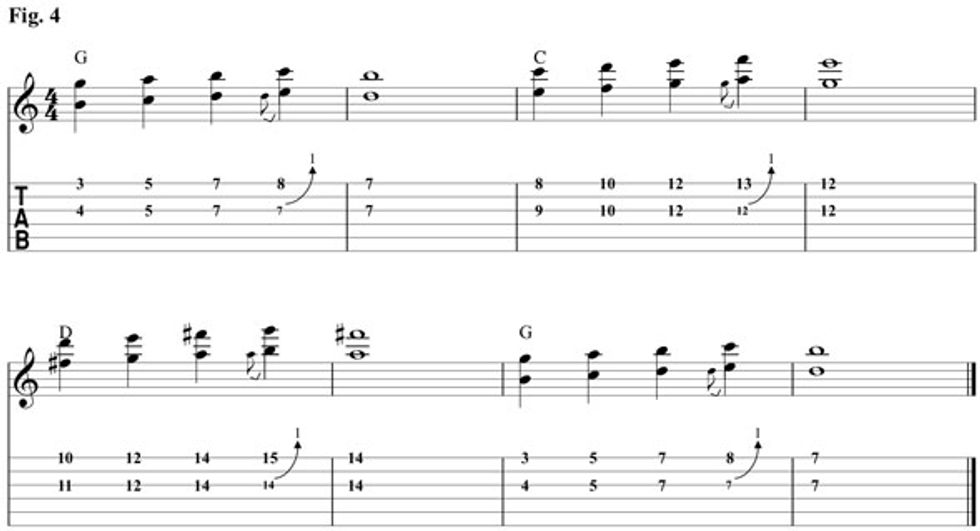
Last, we’ll play the previous phase descending (Fig. 5). I love this sound, because by starting on the suspension we incorporate the soulful sound of the IV–I cadence. This is the essence of many of my favorite steel-guitar sounds.
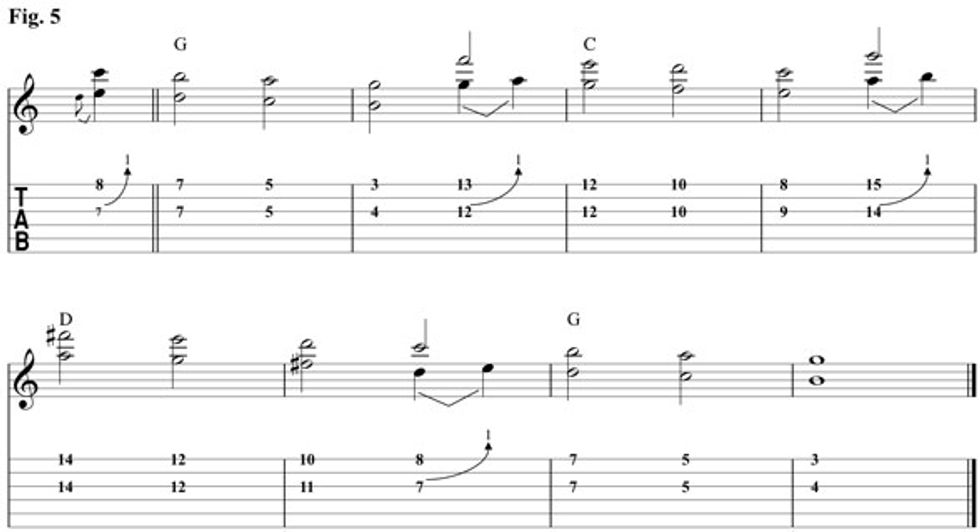
I hope this was fun and easy for all of you, and thanks for checking in.
 Billboard calls Jim Campilongo “an American treasure." He spins a musical web that ranges from gorgeous to sinister, and in 2011 the Fender Custom Shop released his signature model Telecaster. His band with Norah Jones, the Little Willies, released For the Good Times in early 2012 on Blue Note. For more info and downloadable lessons that cover blues, country, jazz, and more, visit jimcampilongo.com/lessons.
Billboard calls Jim Campilongo “an American treasure." He spins a musical web that ranges from gorgeous to sinister, and in 2011 the Fender Custom Shop released his signature model Telecaster. His band with Norah Jones, the Little Willies, released For the Good Times in early 2012 on Blue Note. For more info and downloadable lessons that cover blues, country, jazz, and more, visit jimcampilongo.com/lessons.